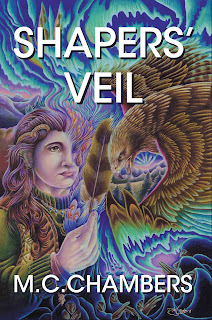The first installment of Terra's web serial THE ANTITHESIS was published on line in February of 2010. By the time she finished the web serial in August of 2011, the site had received over 270,000 hits. The serial was picked up by 1889 Ltd Labs and released in three print volumes this past summer. THE ANTITHESIS takes our traditional vision of heaven, hell -- and the struggle that at once separates and unites them -- and turns that vision inside out.
In addition to her fiction, Terra writes a bi-weekly blogzine at 1889 Labs. She currently works in the field of clinical toxicology and plans to pursue a PhD in microbiology/virology. She is married and lives in Kansas City, Kansas.
Please welcome Terra Whiteman, and join us in a discussion of duality in the context of fantasy and science fiction.
*****
Duality is a term that describes opposing forces; though, the opposing forces that mainly pertain to duality are placed within the topic of good and evil.
The basis of theology—most religion and belief systems, revolves around duality. We must be good and thwart evil. We must abide the laws and learn from the morals written for us, so that we can continue being good. For a large majority of the existence of human civilization, religion was the supreme force that shaped our societal, political and cultural beliefs. Some may even argue that it is still this way for many countries and societies.
Therefore, it goes without a doubt that many forms of fiction, spanning across all genres, somehow encapsulate duality. I'm sure you can think of several off the top of your head at this very second. Many of the classics deal with duality, and without it, we wouldn't have had fairytales either. Duality is a reflection of how us, as a human collective, view the world in the most basic sense.
But how exaggerated is this notion, when placing duality in the perspective of the real world, and real people?
The Enlightenment Period of history was when things began drastically changing. Duality was still there, but it shifted from 'good and evil' to 'right and wrong'. And, though these terms are definitely related to one another, they are not synonymous. During these times, literary fiction began changing as well. Even before then, the Greeks explored the spaces in between good and evil, or right and wrong, reciting epics of wars where not everything was simply one sided, and each character had their reasons for acting in certain ways. The Iliad, Paradise Lost (where Satan is actually more of an anti-hero) and The Divine Comedy are excellent examples of this. It was during these times that duality was approached and analyzed in a more philosophical way, leaving readers questioning whether their idea of 'good and evil' or 'right and wrong' was actually correct.
Since then, we've had a significant addition to character roles in fiction. Before, we simply had the hero/heroine and the villain/villainess. Later on, we switched the hero to the protagonist, which is a more ambiguous term for a leading character, because people began exploring main characters that were less than heroic. For the villain, it was the antagonist, which pretty much is described as the person the protagonist has a problem with. No longer do our 'villains' cackle from towers, attempt world destruction for no apparent reason other than for the fact that they are genuinely evil, or try to cook and eat children. No, now emerges characters that are a little more easily relatable to us; that deal with situations and are placed in circumstances that perhaps we have experienced as well.
Both the worlds of fantasy and science fiction are the leaders in this new evolved form of duality. Often, we are introduced to a number of characters on opposing sides, who despite being enemies, have some traits that we find likeable, or we can sympathize with. When the war begins, and ensues, we are challenged to decide what is right and wrong, given the circumstances, based on the characters we've grown to know (and sometimes love).
And I think this is very important, and crucial, because our world is actually one that is entirely subjective. The best stories were the ones that made us stop and think. They made us question our beliefs, or morals, or their message stayed with us for a very long time. Classics continue to be read for a reason, after all.
The evolution of duality—the black and white curtain of good and evil to the gray veil of right and wrong—has not only made fantasy fiction more complex and deeper, it also made it more personal. Making it more personal allows us, as writers, to touch readers in a way that we couldn't in the earlier ages of fiction. And ultimately, moving readers is something that writers aim for.
Because writing is art. Therefore we are artists, and art should both edify and evoke.
In the parting words of Archdemon Belial Vakkar on the topic of good and evil, from The Antithesis:
"I supposed the events of my life posed quite a good example of the fallacy that was ‘good and evil’. Though I’d occasionally done what might be considered ‘evil’ things, I was most certainly not an evil man. What was evil, anyway? I’d have liked to see a true definition, pointing out the prerequisites of ‘evil’. On that note, I’d have liked to see ‘good’ as well. Because by the standards given in the mythos and religion we’d brainwashed all of you with, I’d say with the utmost sincerity that I had never met a good man. Why?
Because none of that rubbish actually existed. Not good, not evil;
Only justice.
We did what we did because of what was done unto us, period. Justice needed no good or evil, nor had it needed an ethical guideline to reference. It needed a reason, and that was all. And everyone had their reasons, right?"




